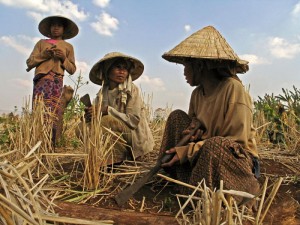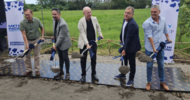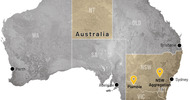Vientiane Times | 22 Aug 2009
Greater foreign investment in rice cultivation is being considered, with the government hoping the country can benefit from technology aimed at increasing production of the staple food.
Minister of Industry and Commerce, Dr Nam Vinhaket made the announcement early this week after returning from Thailand where he joined his Asean counterparts in attending the annual meeting of Asean Economic Ministers.
He met his Thai counterpart, and invited Thailand to join with Kuwait to invest in rice cultivation in Laos.
It is still unclear whether foreign investors would be allowed to own 100 percent of investment blocks in rice cultivation as the move would encourage Lao farmers to sell their land use rights to foreign investors.
About 80 percent of Laos' population relies on self-sown rice, and the government is seeking to avoid a situation in which local people are limited to being solely labour for foreign-owned agricultural businesses.
Dr Nam admitted that the policy to allow foreign investment in rice cultivation was an idea proposed by potential investors.
“They proposed to us that they wanted to purchase Lao rice, they can provide funds and markets, but they want to produce in Laos,” he said.
He said there was no detail regarding an official investment promotion policy for rice cultivation as yet.
Kuwait is one of the countries which has expressed strong interest to take part in development of rice cultivation in Laos, hoping to import the staple to the Middle East where cultivation is impossible due to lack of suitable arable land and water.
The Kuwaiti government has provided a grant to help conduct rice cultivation research in Laos to investigate the possibility of increasing efficiency with a view to trade.
Dr Nam said the government had vowed to support the Cambodian Prime Minister's initiative to establish a rice trade group among the lower Mekong nations of Cambodia, Laos, Thailand and Vietnam as well as Myanmar, aiming to stabilise the price of rice in the region.
He said more technical discussions among the neigbouring countries were needed before establishment of such a group.
At present, these countries are members of the Ayeyawady- Chao Phraya - Mekong Economic Cooperation Strategy, which carries out measures to boost border trade.
The aim of the proposal is to enable business people from one country to invest in rice farming in neighbouring countries and import produce without paying tariffs. Another of the main aims of the cooperation is helping boost rice production efficiency in each respective country.
Dr Nam said Laos would benefit if a rice trading association was established despite many believing that Laos would not be able to match major rice traders Vietnam and Thailand.
Dr Nam said although there was no official record on the amount of rice which Lao farmers exported, many Lao farmers were already able to generate income by exporting their rice to neighbouring countries under the border trade framework.













